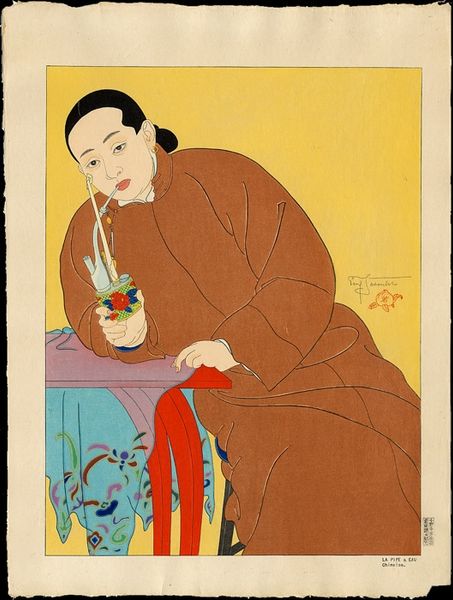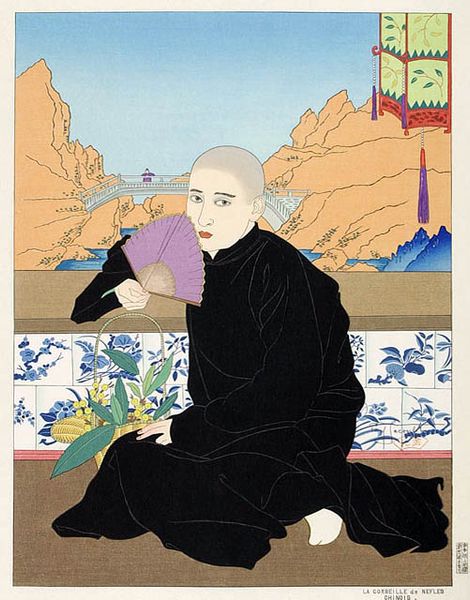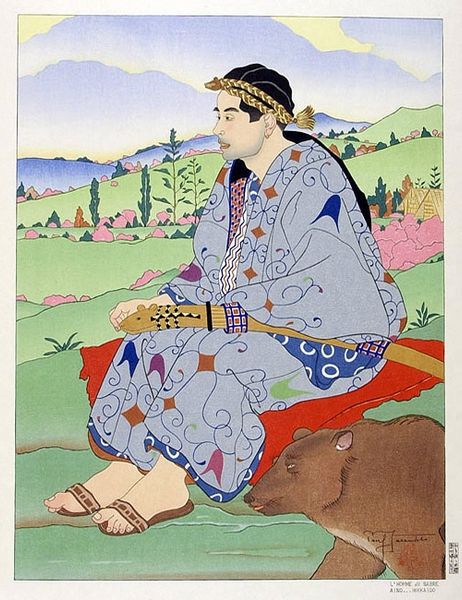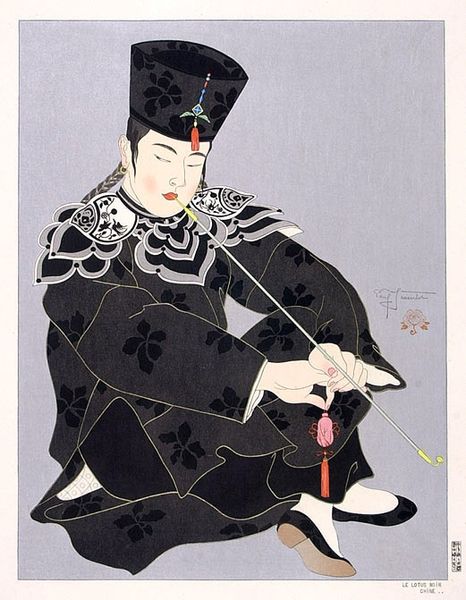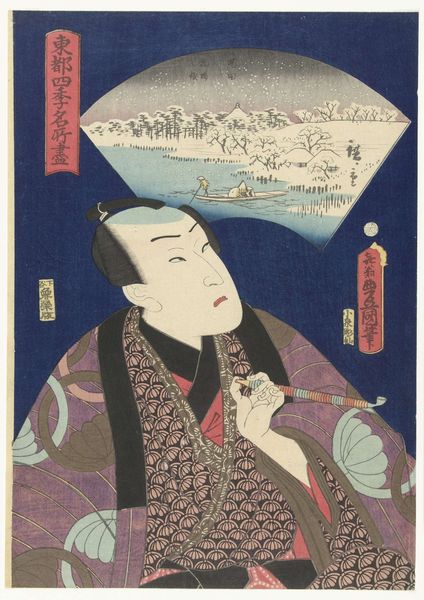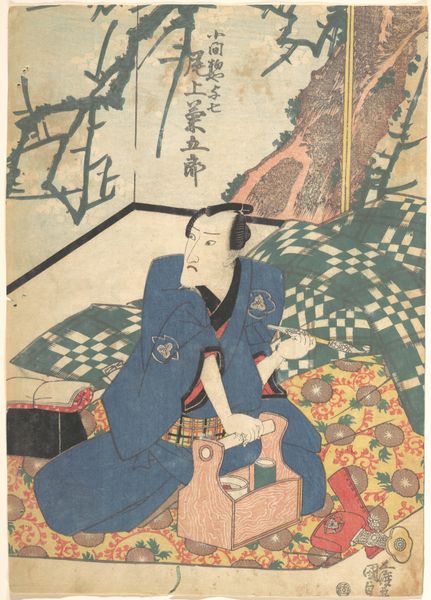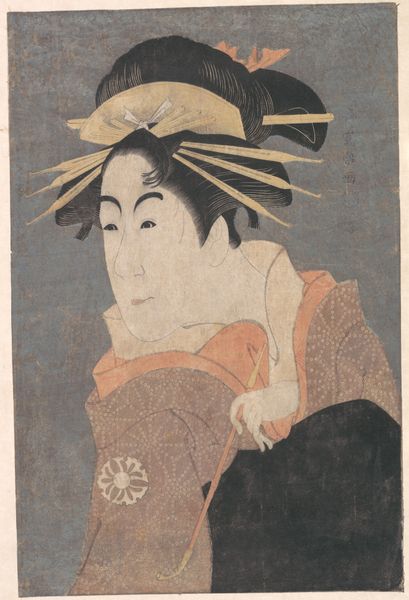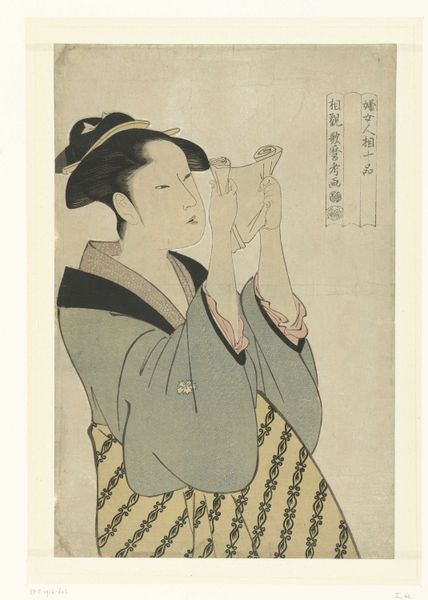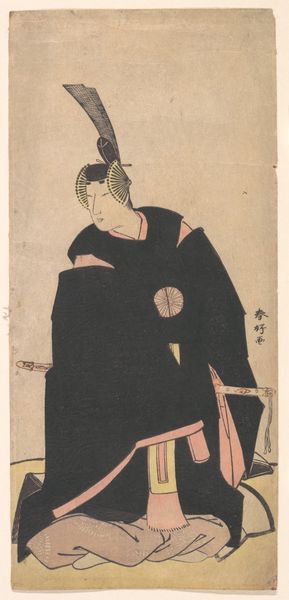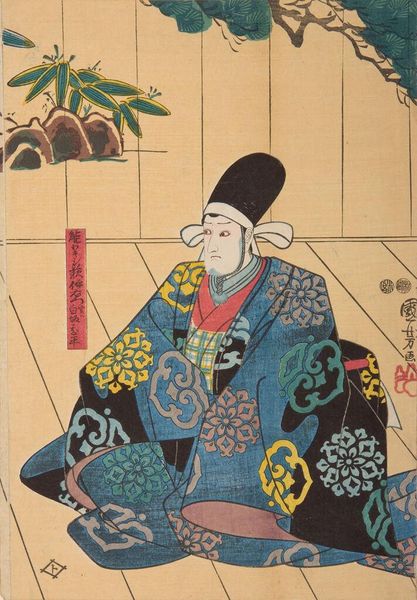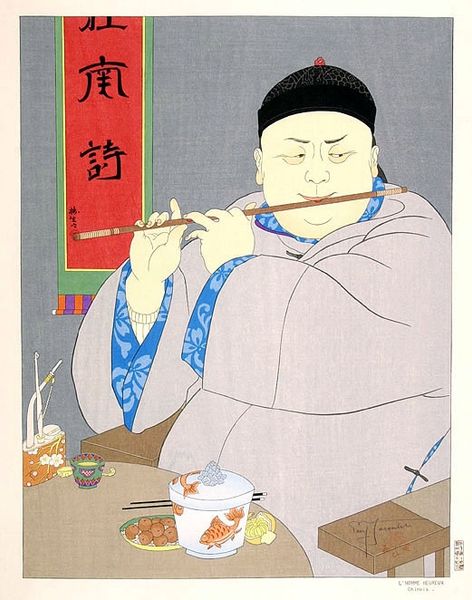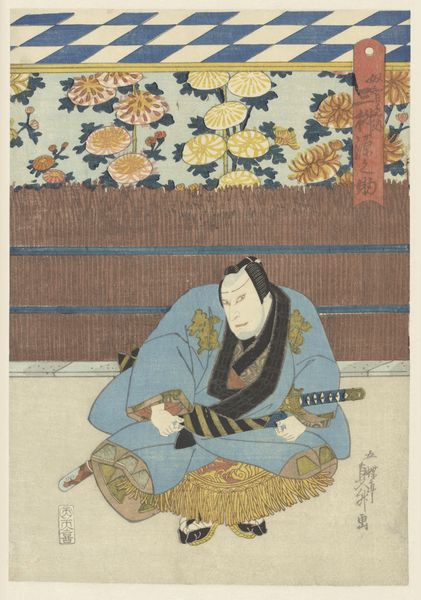
Copyright: Public domain Japan
Curator: We are looking at "L'Homme Qui Ecrit. Chinois," or "The Man Who Writes. Chinese," a woodcut and watercolor print completed in 1953 by Paul Jacoulet. Editor: What strikes me first is the sort of gentle melancholy of it all. It's like he's paused mid-sentence, gazing off with a slightly bemused expression. And those colors, they’re not traditionally “masculine” but they're really working, aren't they? Curator: Indeed. Jacoulet’s work exists at a fascinating intersection. Born in Paris but raised primarily in Japan, he was deeply influenced by ukiyo-e traditions, specifically printmaking. However, unlike many of his predecessors, Jacoulet incorporated Western artistic principles, complicating any straightforward reading of his work. Editor: Western principles, you say? How so? I see a distinctly Asian aesthetic. The composition, the colors… it all sings of a very specific cultural sensibility. Curator: While rooted in Japanese aesthetics, Jacoulet pushed beyond tradition, incorporating stronger figuration, and unique uses of color. He made portraits of peoples from varied regions of Asia and Oceania that, even admiring as they are, have to be considered through the lenses of power. In "L'Homme Qui Ecrit," for example, the details in clothing, and the sitter's implements speak to the nuances within a broader idea of Chineseness. Editor: So there's tension, then. A bridge, maybe, but also a distance. Like a translation that never quite captures the soul of the original. It’s gorgeous, don't get me wrong. But I'm wondering, is it really about the man, or is it more about Jacoulet’s perception of him? The pink robe feels… embellished. Curator: That tension is central to understanding Jacoulet’s project. He created an idealized version of Asia. It's work of beauty, no doubt, but also loaded with complex postcolonial implications. How might our understanding be different if the sitter was in charge of his own image, and, literally, his own writing? Editor: I guess it reminds us that even beauty has its own context and agenda. And it's up to us to unpack that. Curator: Absolutely. Examining that tension gives us, I think, a deeper understanding of both the beauty and the problematic underpinnings of Jacoulet’s work.
Comments
No comments
Be the first to comment and join the conversation on the ultimate creative platform.

